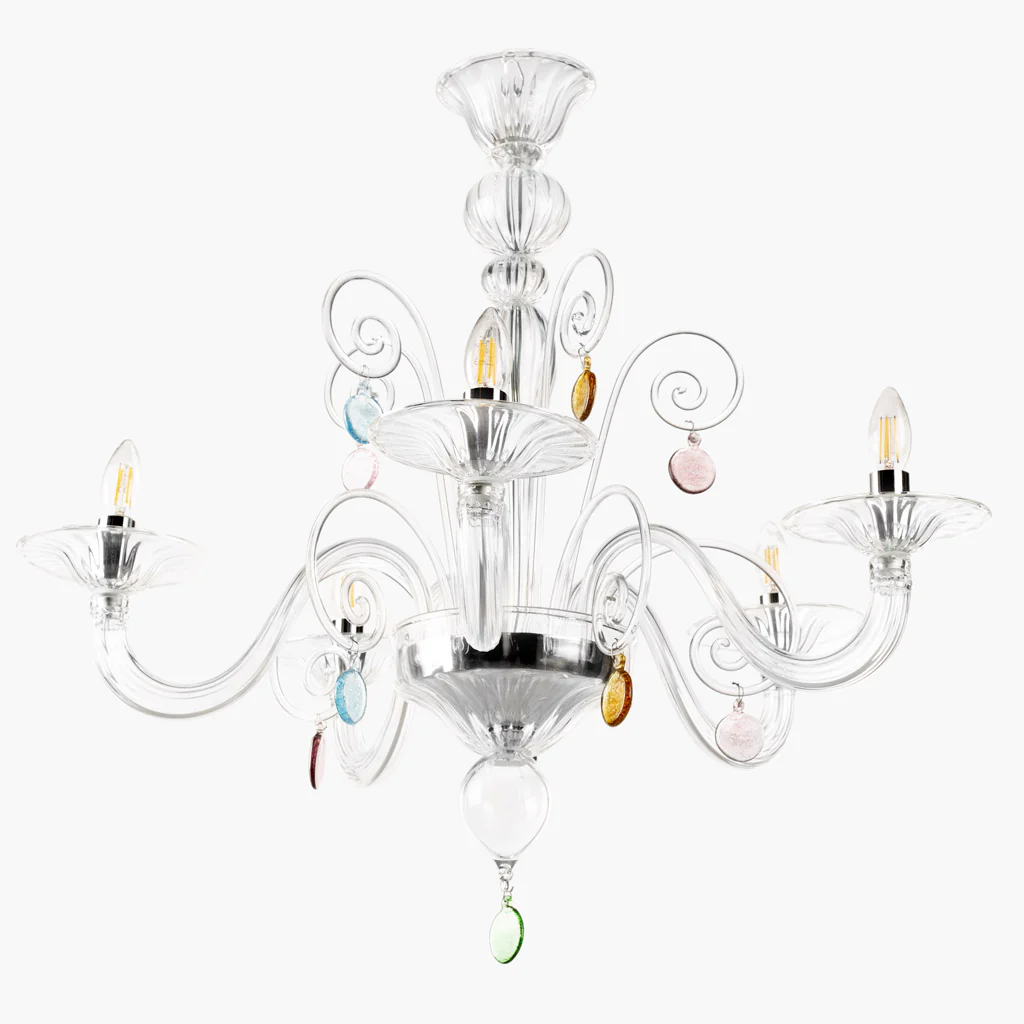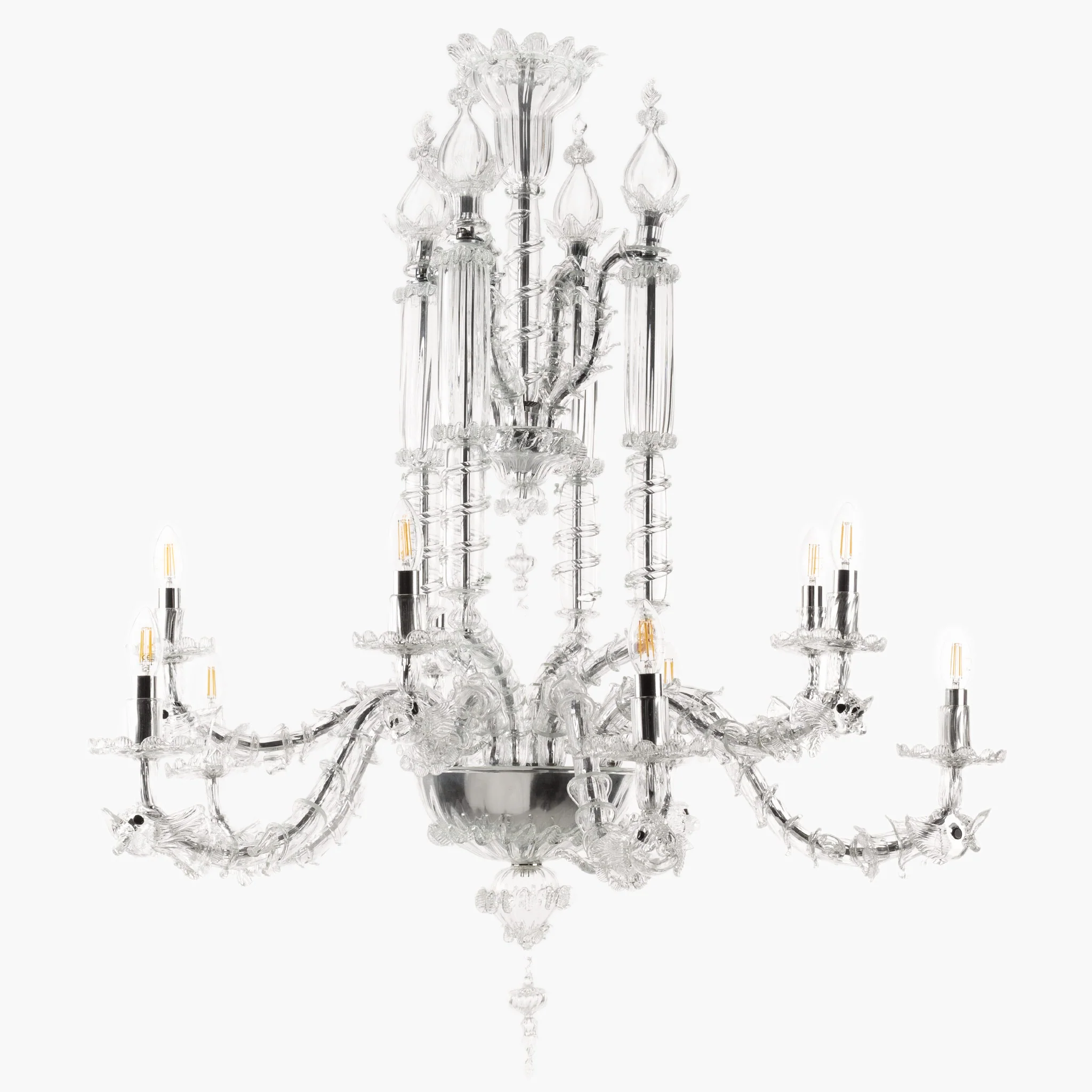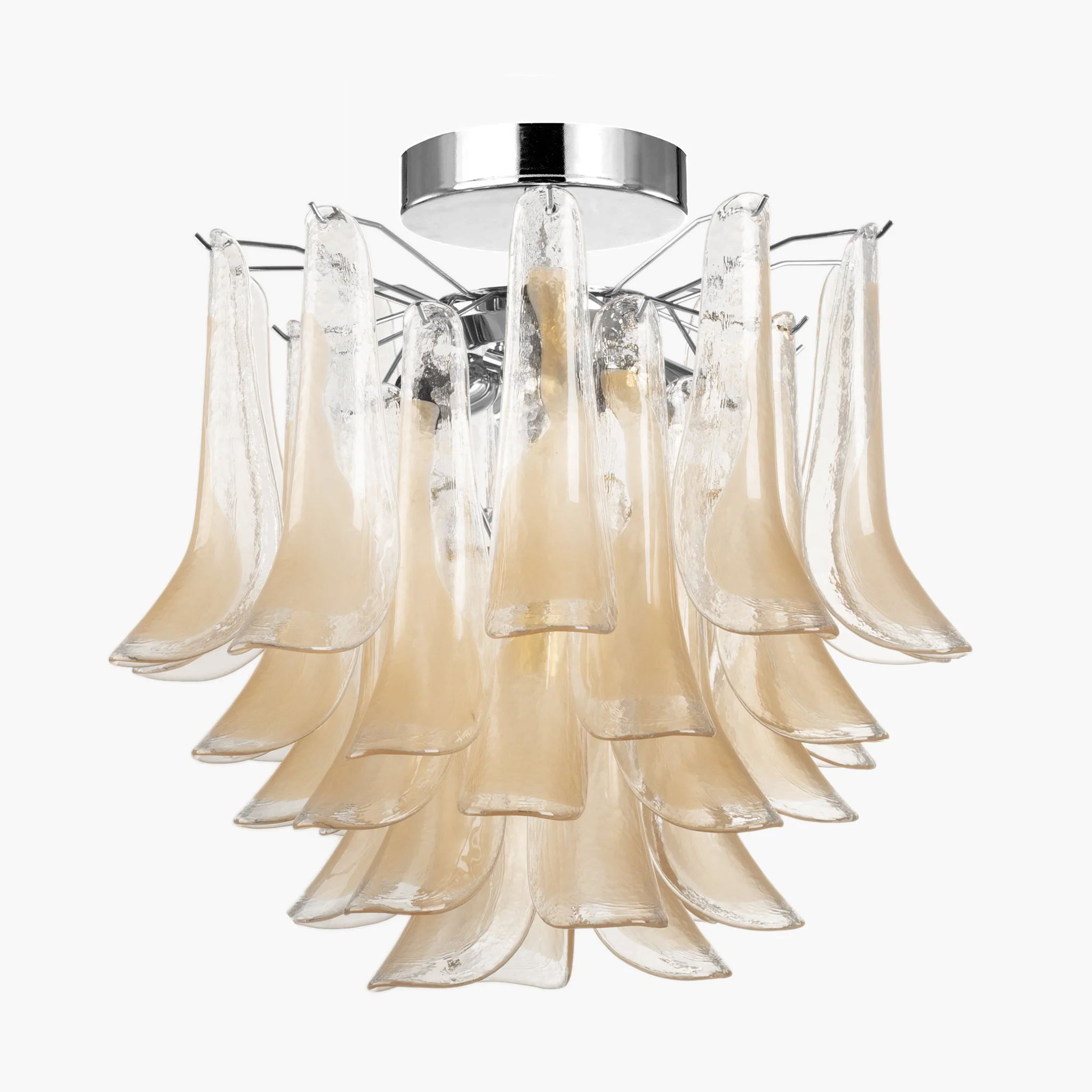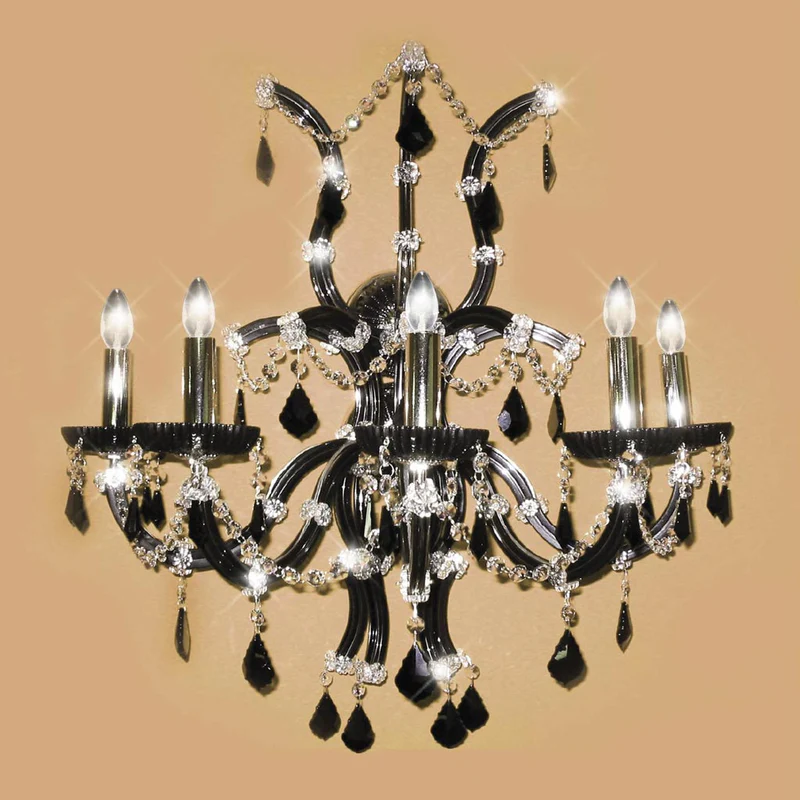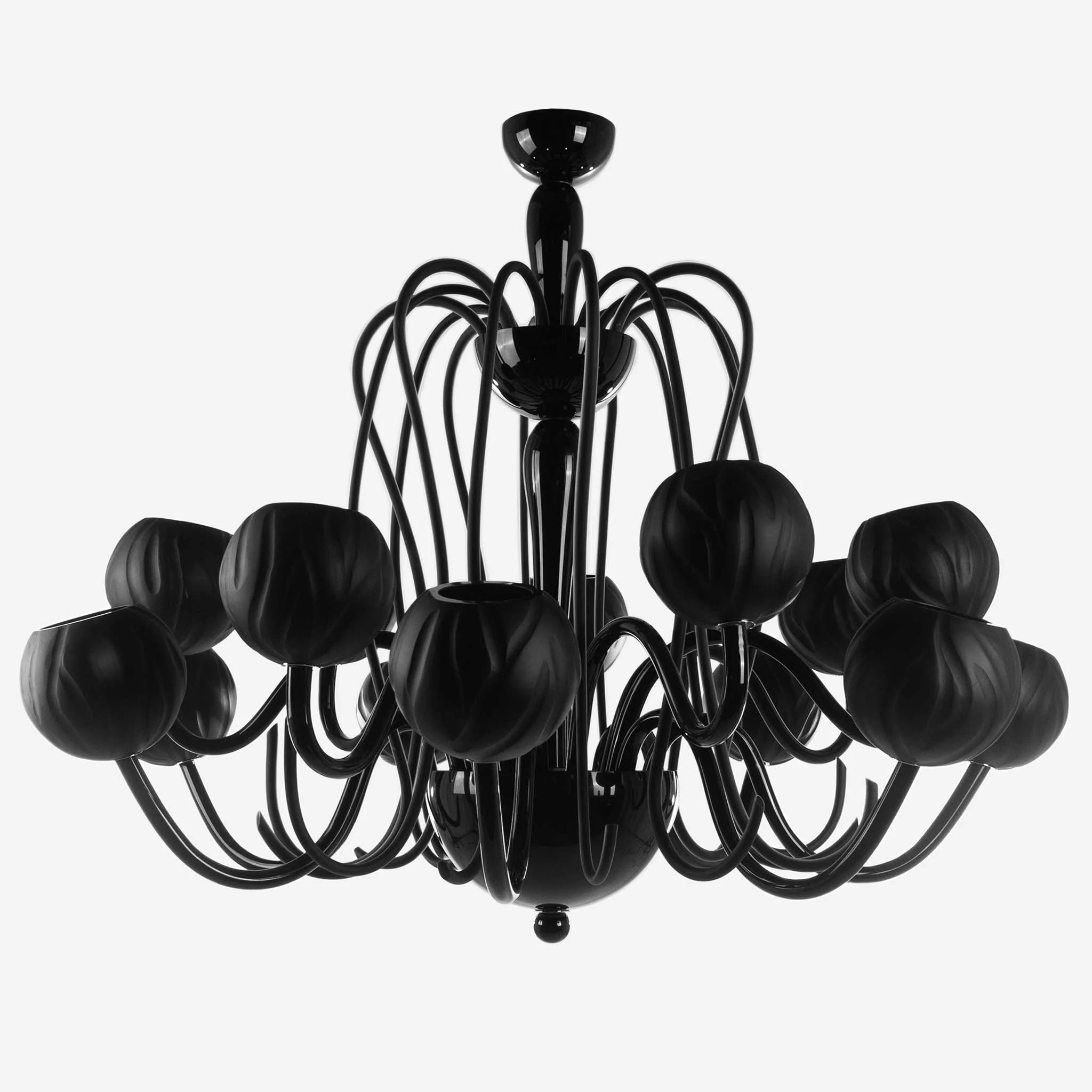The fascinating history of Murano glass

The history of Murano glass: a millenary art
Origins
The history of Murano glass is rooted in Roman times, when glassmaking was widespread throughout the Empire. However, it was only in the 7th century AD that the art of glassmaking developed in Murano, becoming a globally recognized excellence.
The earliest evidence of glass production in Murano dates back to the 7th century AD, though it is likely that glassmaking was already practiced in the lagoon during earlier times. A document from 641 AD mentions the presence of a magister vitri in Murano, confirming the importance that glass production had already assumed by then.
During the 9th century, the technique of glassblowing spread across Europe, revolutionizing the art of glassmaking. Murano’s master glassmakers quickly mastered this new technique, excelling in creating large and complex forms.
In the 12th century, the first guilds of glassmakers were established in Murano. These guilds were responsible for ensuring the quality of the glass produced and for passing down the secret techniques of glassmaking from generation to generation.
The relocation of glass factories from Venice to Murano
In 1291, Venice’s Great Council ordered the relocation of all glass factories from the city of Venice to the island of Murano.
This decision was made for two main reasons: to reduce the risk of fires, as the glass furnaces posed a threat to Venice’s wooden buildings, and to control production. Moving the glass factories to Murano allowed the Venetian government to better oversee glass production, which was economically essential to the Republic.
The rise of Murano glass dominance
With the relocation of glass factories to Murano, the island became the undisputed center of glass production in Europe. Murano’s master glassmakers continued to refine their techniques, creating invaluable objects that captivated markets worldwide. This was supported by the Venetian government, which invested in the research and development of new glassworking techniques and promoted the export of Murano glass products globally.
The secrets to Murano glass’s success: an in-depth analysis
The choice of Murano as the center for glass production was no coincidence. The island, located in Venice’s lagoon, offered several advantages that were crucial to Murano glass’s success and international fame, starting with:
1. Abundance of raw materials
The Venice lagoon was rich in deposits of silica sand, the fundamental raw material for glass production. The easy availability ensured a constant and low-cost supply, a determining factor for the industry’s growth.
The island also had a plentiful supply of firewood, an essential fuel for feeding the glass furnaces. This local availability prevented reliance on external sources and ensured an efficient production process.
Additionally, the lagoon and surrounding areas provided other useful materials for glass production, such as soda and lime, contributing to Murano's glass industry’s self-sufficiency.
2. Safety and control
Moving the glass factories from Venice to Murano in 1291 offered considerable safety advantages, as the glass furnaces posed a significant fire risk to Venice’s wooden houses. Murano’s isolation helped contain potential accidents and protect the city.
The Republic of Venice could also exercise tighter control over glass production, which was strategic for the Republic’s economy and security. Murano’s isolation made it easier to monitor activities and safeguard trade secrets.
3. Favorable environment
The lagoon’s abundant water supply was essential for cooling the glass. The lagoon’s water, in particular, possessed the ideal properties for producing strong, high-quality glass.
Additionally, the temperate climate of the Venice lagoon created ideal conditions for glassmaking. Low humidity levels facilitated the glassblowing process, ensuring better production results.
4. Skill and innovation
Another reason for Murano’s success was its ability to attract the best master glassmakers from around the world, creating a pool of exceptional talent and expertise. Their skill and dedication to the art of glassmaking led to the development of new techniques and the creation of unparalleled beauty and complexity.
Murano’s master glassmakers were also pioneers in technological innovation, inventing new tools and refining glassworking techniques. Their constant pursuit of perfection contributed to Murano glass’s excellence.
5. Trade secrets
Murano glassmaking’s trade secrets were closely guarded to protect its know-how. The Republic of Venice implemented several measures to safeguard these secrets. The secrecy of the techniques ensured a competitive advantage and fueled the allure and exclusivity of Murano glass.
Murano’s isolation also helped prevent knowledge from spreading and stopped skilled workers from leaving for other production centers.
Additionally, government support played a vital role. The Republic of Venice invested in the research and development of new glassworking techniques and promoted the export of Murano products worldwide.
These factors combined to contribute to Murano glass’s success, making it an internationally recognized excellence and a precious legacy that continues to captivate the world.
The technical innovations of Murano Glass: a journey between tradition and cutting-edge craftsmanship
Murano’s master glassmakers, guardians of a millenary tradition, have developed and perfected various glassworking techniques over the centuries, creating a unique and inimitable art. Some of the most important innovations contributing to Murano glass’s international fame include:
1. Mouth blowing
Mouth blowing involves blowing air into a pipe of molten glass to create a bubble, which is then shaped using tongs, scissors, and other tools. Allows the creation of large objects and complex shapes, with a variety of thicknesses and intricate details. Mouth-blown objects include vases, chandeliers, sculptures, glasses, and ornaments
2. Lampworking
Lampworking uses a flame (formerly candle flame, now gas flame) to heat and shape small amounts of glass. Enables the creation of small, highly detailed objects with intricate decorations. Lampworked objects include beads, jewelry, figurines, animals, and miniatures.
3. Glass filigree
Glass filigree involves passing molten glass through a hole, creating threads of various sizes and colors. Allows the creation of mosaics with shading and streak effects, as well as original decorations and ornaments. Glass filigree is used to create mosaics, chandeliers, jewelry, fabrics, and sculptures.
In addition to these historical innovations, Murano’s master glassmakers continue to experiment and innovate, developing new techniques and glass applications. If you’re interested in learning more, visit our blog dedicated to Murano glassworking techniques!
Recent innovations include glass bonding, which allows different parts of glass to be joined without lead, creating stronger and safer objects. New pigment formulations also enable highly intense and refined chromatic and decorative effects, while digital technologies are opening up new frontiers in glass design and production, offering unprecedented creative and productive possibilities.
Some glassmaking techniques are considered true art forms, such as:
Murrina
This technique involves creating glass rods with colored murrine inclusions, used to craft objects with intricate decorations and stunning mosaics.
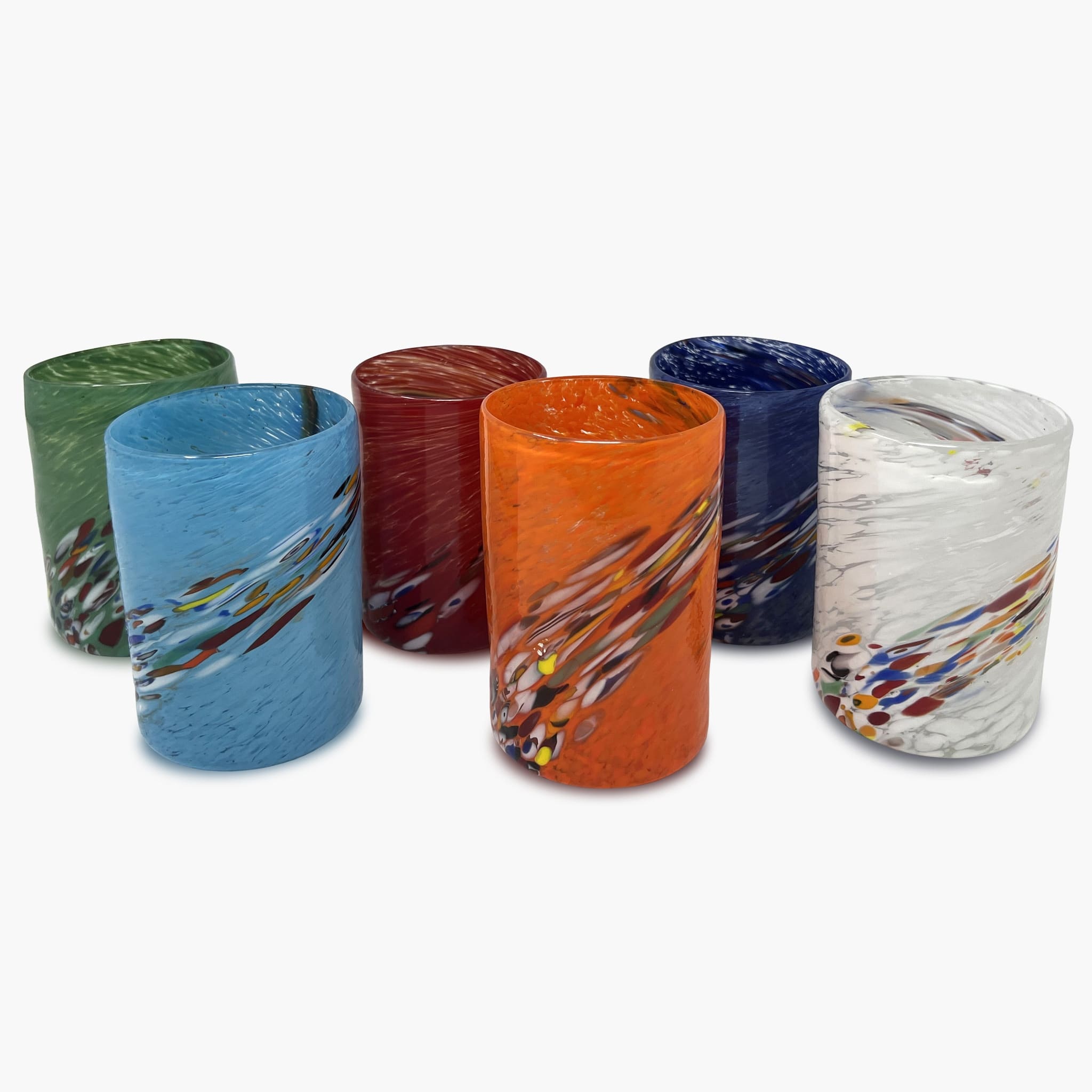
Reticello
A technique that creates a network of colored glass threads, which is then encased in a second layer of transparent glass, resulting in a highly elegant effect.
Calcedonio
A technique that mimics the appearance of chalcedony, a semi-precious stone, creating objects with captivating streaks and veins.
The technical innovations of Murano glass testify to the creativity, ingenuity, and dedication of Murano’s master glassmakers, who continue to write the history of this unique and unmatched art.
The heyday of Murano glass: an art that conquers the world
Murano glass has experienced periods of great splendor and international fame, establishing itself as an artistic excellence sought after and appreciated throughout the world. Epochs of maximum splendor include:
1. The Renaissance (15th-16th century)
The Renaissance was a period of great cultural and artistic ferment, which also influenced Murano's glass production. Murano's master glassmakers were inspired by classical art and new artistic trends to create works of great beauty and refinement. Various glassmaking techniques, such as mouth-blowing and lampworking, were also perfected, allowing them to create objects of great complexity and variety.
Murano glass vases, chandeliers, sculptures, glasses and other objects became status symbols sought after by European courts and collectors around the world.
Furthermore, masters such as Angelo Barovier, Giorgio Ballarin and Paolo Venini gave life to glass masterpieces that are still admired and preserved today in the most important museums of the world.
2. The Baroque (17th-18th centuries)
The Baroque was a period characterized by opulence, which was also reflected in glass art. Murano's master glassmakers created objects of great decorative richness, with intense colors, elaborate shapes and sumptuous ornamentation.
The production of Murano mirrors became particularly flourishing during this period, thanks to the perfection of the technique of glassblowing into sheets. Large Murano mirrors decorated the palaces and mansions of the wealthy classes throughout Europe.
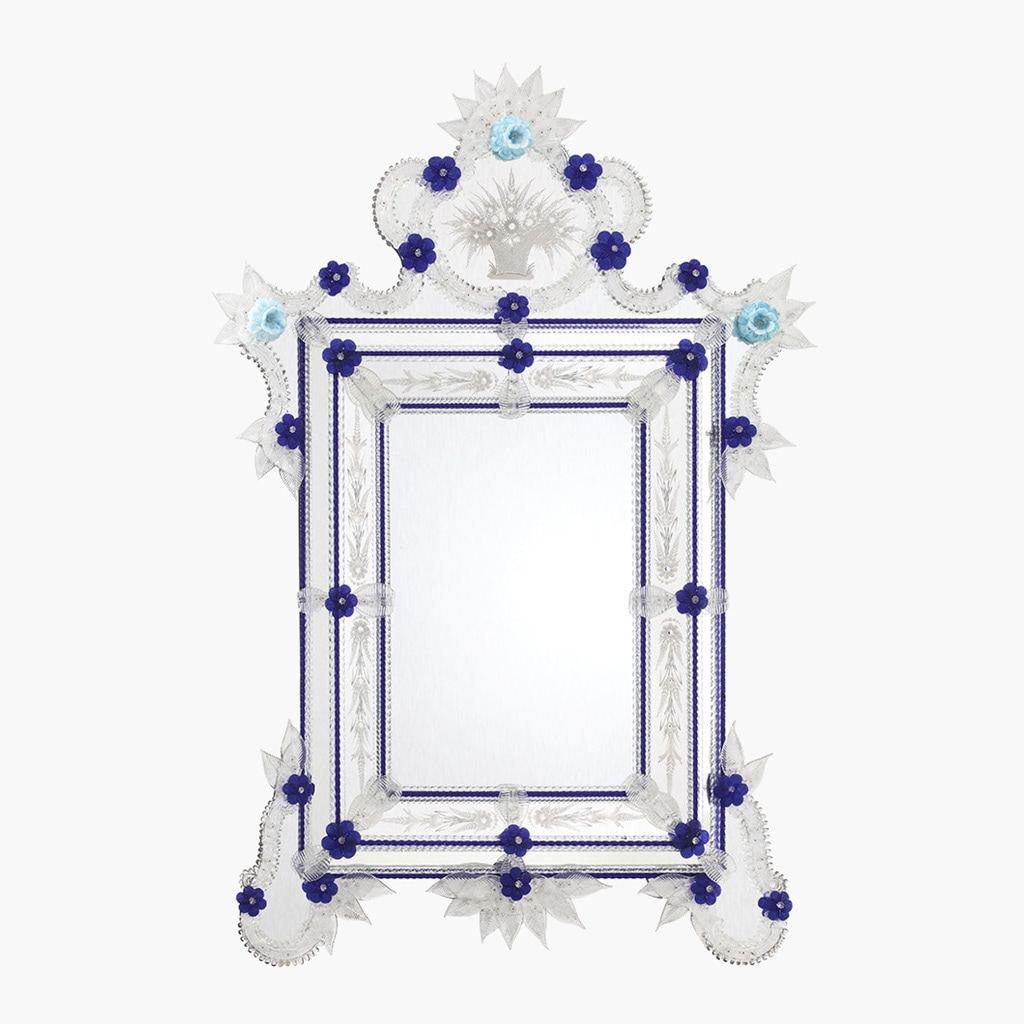
Murano spangles, small colored glass tiles used for decorations and mosaics, became a distinctive element of Venetian Baroque.
Masters such as Giuseppe Briati, Giovanni Battista Gaspari and Lorenzo Radi created works of great originality and virtuosity that contributed to the international fame of Murano glass.
In addition to the Renaissance and Baroque, other periods of great success for Murano glass included the 19th century as with the rediscovery of Gothic and other styles historical, Murano glass was enriched with new shapes and decorations. The20th century followed: Art Nouveau and Déco influenced the design of Murano glass, with sinuous lines, bright colors and bold geometries. Currently, our Murano glass masters continue to innovate and experiment, creating works of art of great value and originality. To date, in fact, Murano glass products continue to be considered luxury products, with a vast production of objects of every style, from classic to modern.
Some examples of works of art in Murano glass created during the periods of maximum splendor are the Barovier vase with dairy product, a mouth-blown vase with a dairy product decoration, a technique that creates an effect of intertwined white glass threads and the mirror with flower frame, one mirror with an elaborate frame in blown glass decorated with Murano flowers and leaves, you can also find it for sale on our site.
Worth mentioning is the drop chandelier, a chandelier with a cascade of Murano glass drops, creating a light and elegant effect, and the sculpture, a Murano glass sculpture with even abstract shapes and intense colors, representing the evolution of contemporary design.
The decline and rebirth of Murano glass: a story of innovation and resilience
In the 19th century, Murano glass production underwent a period of decline. Several unfavorable circumstances contributed to this difficult time, one of which was the advent of new technologies. The invention of new glass-making machinery in other European countries posed a serious threat to Murano's traditional craftsmanship
Another cause was international competition: competition from production centers such as Bohemia and France, which took advantage of new technologies and offered products at lower prices, challenged the Murano glass market.
However, the 20th century saw the rebirth of Murano glass thanks to the work of some innovative master glassmakers. Among the key figures of this period we remember Vincenzo Moretti who experimented with new blowing and decoration techniques, creating objects of great originality and beauty; Ercole Barovier who introduced the use of crystal glass in Murano, giving life to a new era of elegance and refinement and Paolo Venini who collaborated with internationally renowned artists and designers , creating glass works of art of great value and modernity.
These master glassmakers gave new life to the art of Murano glass, renewing the design and manufacturing techniques.
Their innovations allowed them to adapt to new artistic trends as Murano glass opened up to new styles, such as Art Nouveau and Déco, reinterpreting them with originality.
They also made it possible to improve the quality of the product through the introduction of new technologies and the use of high quality materials and to expand the product range, including new objects such as jewellery, lamps, sculptures and mosaics
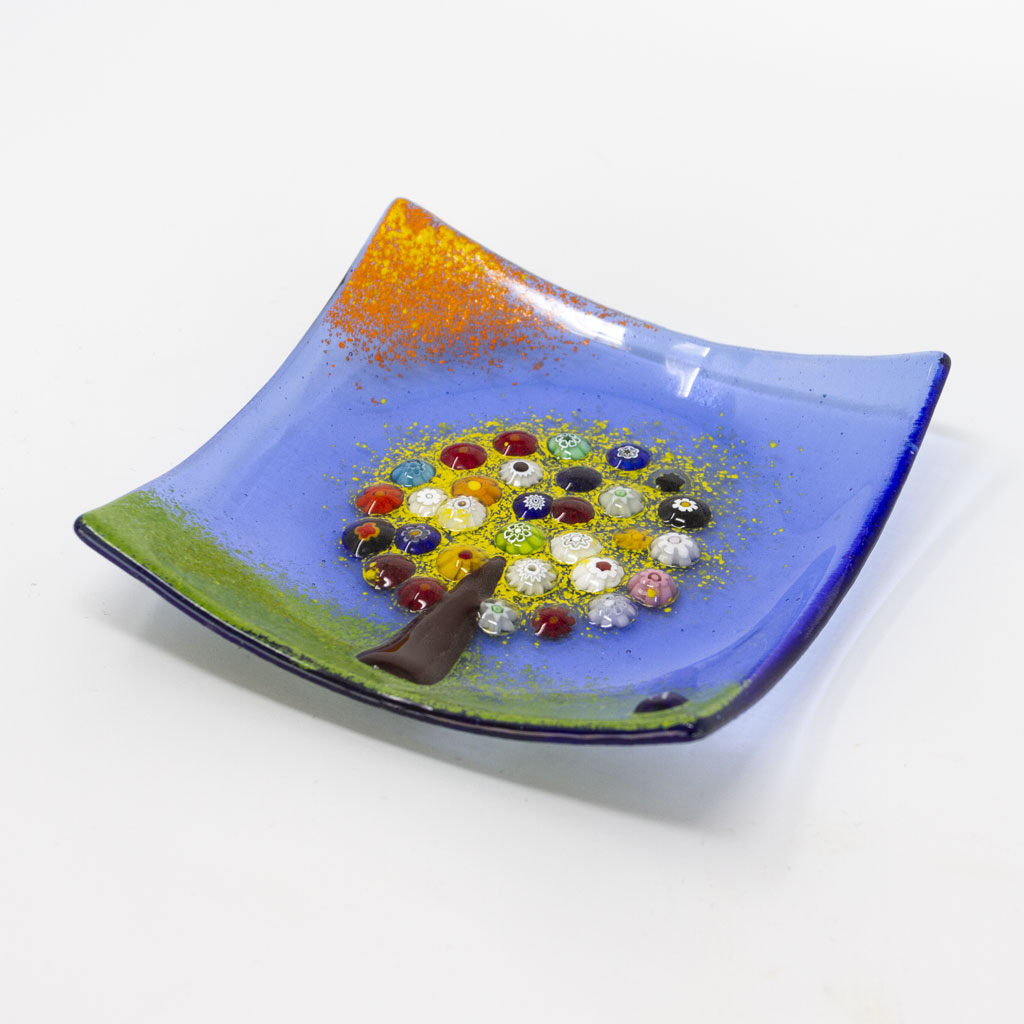
The rebirth of Murano glass was also favored by the promotion at an international level with participation in international fairs and exhibitions to make the new Murano glass known to a wider audience. The renowned artists and designers were important and contributed to increasing the prestige and visibility of Murano glass. The "Vetri di Murano" consortium was then established in 1994 to protect the brand, guaranteeing the quality and authenticity of the glass produced on the island.
The rebirth of Murano glass is a story of innovation, resilience and passion. The master glassmakers of Murano have been able to adapt to new challenges, reinventing their art and preserving a tradition that continues to fascinate the world.
Today, Murano glass is still an excellence recognized at an international level. The master glassmakers of Murano, custodians of a thousand-year-old tradition, continue to innovate and experiment, creating works of art of great value and originality.











